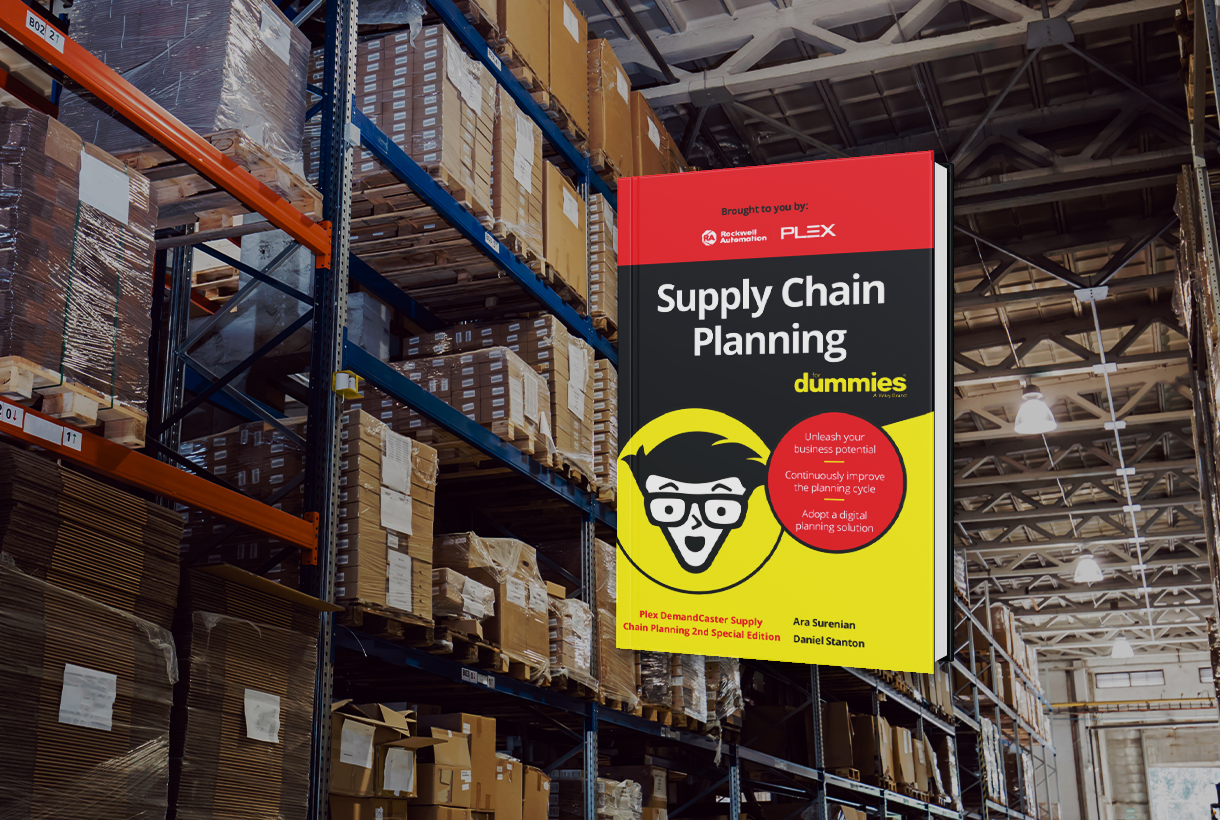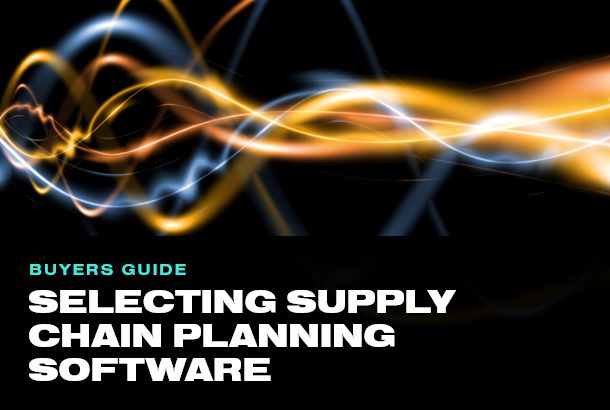How Best Practices and Automation Can Level the Playing Field for Small and Medium Sized Businesses
In the past, small and medium sized businesses (SMBs) struggled to match the pace of larger companies in technology, process improvement tools and infrastructure improvements. Limited by size and facing practical everyday issues like cash flow and shortage of critical skill sets that big companies can better manage because of their larger scale, SMBs were traditionally behind the curve on a lot of things.
As the digital age dawned, SMBs discovered newfound benefits in the form of disruptive technology that could help level the playing field. One such technology is with automation software such as materials requirements planning (MRP). MRP is a system used to calculate the raw materials, components and assemblies required to manufacture products. And with automation software driving their MRP efforts, SMBs discovered they could leave behind manual, error prone spreadsheets and manual planning methods to bring in cost effective software on par with enterprise software systems used by larger competitors.
What is MRP Software?
MRP software automates and optimizes manufacturing processes. It is a planning and control system that allows companies to manage their inventory, production and scheduling. Developed in the 1970s, MRP helped businesses calculate material requirements for manufacturing. Those calculations could be used to gain better control over inventory accuracy and utilization. They could also be used to optimize inventory levels to meet service level requirements while not tying up excess cash in stock and holding costs.
MRP systems seek to do three things:
- They are used to minimize lead times.
- They can optimize inventory levels.
- They improve business efficiency through improved service levels.
Today’s MRP systems are also agile and flexible and are usually cloud-based to allow SMBs access to the latest versions while customizing the experience to meet each company’s unique needs. This allows integration with other software systems for planning and supply chain for an end-to-end ecosystem of automation. The result is a synergy that improves processes and control over materials to allow SMBs to compete against larger foes.
Why Do SMBs Need MRP Software?
There are several reasons for SMBs to utilize MRP software. For one, because MRP is centered on materials, it is integrally linked to the supply chain. As many companies utilize planning and supply chain software, having a manual management process in the critical middle stage for manufacturing would create a barrier to efficiency.
And as mentioned above, a second reason is that MRP software puts SMBs on a level playing field with larger competitors. As industries become more digitized, MRP software can provide a world class system on par with those of large companies. This was a gap that went unanswered for many years that is closing through use of technology. The result is that SMBs can leverage systems like MRP in conjunction with their smaller size and use agility and flexibility as a competitive advantage.
Finally, there is no reason not to utilize MRP software. As technology has advanced, costs have come down. And with cloud-based systems, SMBs may find that the cost of using MRP software is less than the cost and time associated with manual systems.
How MRP Software Works
MRP systems are considered “push” systems for inventory control and rely on forecasting of customer demand. It attempts to answer three questions essential to production:
- What is needed?
- How much is needed?
- When is it needed?
Once forecasts are made and added to the MRP module, required material quantities can be determined and purchased. This reliance on demand forecasting is why MRP software works best in conjunction with planning and forecasting software.
After material requirements are determined, the software breaks inventory into independent and dependent demand. Independent demand is the required volume of finished product, while dependent demand is the volume of raw materials, components or assemblies required to produce finished goods.
Because it is automated, MRP software can utilize data received from either customer orders or from sales forecasts. The logic within the software uses both historical data as well as any forecasts to determine quantities required. Beginning with the production plan, MRP converts the production plan into a list of requirements into a list of sub-processes, subassemblies, component parts, packaging and raw materials needed to meet the schedule.
It can also analyze deeper data from things such as expiration dates of material (when applicable), bills of lading and other raw data to coordinate and synchronize the flow of materials to orders within the system. And it can track many variables including:
- Inventory
- Due Dates
- Bills of Material
- Sales Orders
- Purchase Orders
- Late or Expedited Orders
- Forecasts
By analyzing the data from these and other sources, MRP software can manage the ordering of materials to meet production requirements. It helps improve factory efficiency by showing what is needed and at what time within the operation. And it optimizes stock to meet orders while keeping inventory levels as lean as possible.
Benefits of MRP Software
MRP software offers companies a cost-effective way to improve flexibility and agility to respond to demand. Today’s software is also modular and customizable to fit any level of manufacturing complexity. This offers many benefits over older, on-premise versions and allows SMBs to use MRP software to improve business processes. Other benefits include:
- Inventory Control – Leveraging data from the production schedule, MRP software can determine precise levels of inventory required for production. By optimizing parts and materials, companies can lower carrying costs and increase inventory turns to improve their cash flow position. The software will also determine the exact cost of the inventory required.
- Purchase Planning – With MRP software, companies can develop an in-depth purchasing process. It allows vendors to be centrally managed and purchase orders can be generated automatically based on rules-based flexibility. The system also manages purchase terms and can automatically send notifications to update suppliers as well as internal customers. And it will track and link the purchasing of materials with progress in manufacturing and utilize analytics to keep track of material availability in real-time.
- Production Planning – By detecting bottlenecks in production, software can adjust or recommend adjustments to prevent lags and downtime due to lack of materials. While manual management of production may often result in an “all or nothing” approach to keeping specific product lines on track, the analytical capabilities of MRP software can help manage these constraints to offer workarounds or reroutes that would not have occurred to managers otherwise.
- Work Scheduling – The impact of optimized inventory control and materials ordering allows managers to use data to also optimize work scheduling. Because the system can access production time, yield and performance to schedule, MRP’s analytical capability provides managers with tools to plan tasks, regulate labor and even control labor and operational costs.
- Economic Purchasing – The system not only accounts for the quantity of materials required. It can also account for their cost. This includes rolling in the delivery, shipping, storage and other carrying costs to provide a more comprehensive view of dollars spent. This capability allows decision-makers to order based on optimized volume or timing to eliminate unnecessary purchases.
- Data Management and Documentation – Because data is unsiloed, MRP software can analyze a multitude of processes to provide insights and help develop improvement strategies. This includes the ability to analyze on-time orders, late orders, late POs, manufacturing performance, on time delivery status and can even help companies improve overall equipment effectiveness (OEE), sales orders, and cash flow.
- Time Savings – Because MRP software automates many processes previously done by staff, it can result in a time saving for the company. This includes not only task specific functions within departments, but interdepartmental tasks as well, saving both time and reducing errors.
Best Practices for SMBs Using MRP Software
The value of MRP software is that it allows companies to build a demand-driven MRP strategy and creates a supply chain that is dynamic and adaptive. But software alone will not provide a “magic pill” to improve inventory accuracy, supply chain and production processes. It requires sound business decisions to adhere to best practices when deploying to a manufacturing or service environment. These best practices include:
- Assess Needs – Deploying MRP software requires assessing the needs of the organization and measuring unknown elements. Many companies just beginning to scale have never measured their internal capacity and output. Once the needs are understood and quantified, business rules can be applied to the software to hone its capabilities and its value.
- Set Realistic Targets – There is an old saying by Peter Drucker that says: “If you can’t measure it, you can’t improve it”. Setting realistic targets in key areas means knowing what current conditions are. Improvements in business processes, manufacturing, inventory and cost improvement can be adjusted as the system’s analytics produce actionable data that allows managers to understand where they have progressed over the original baseline and to hit the targets established.
- Plan for Training – Adoption of new software can cause anxiety among staff. And learning curves have traditionally been steep. However, most software today is modular and cloud-based with more intuitive functionality through use of dashboards, dropdowns and other features. Still, allowance needs to be made for effective training of staff. Failure to train and get staff past the learning curve can lead to underutilization of the system or to building errors into the process based on improper use or understanding.
- Review Internal Standard Operating Procedures (SOPs) – Because automated MRP software will impact every aspect of production, purchasing and scheduling, internal SOPs need to be evaluated. Again, this includes manufacturing, scheduling, purchasing and inventory control. Many SOPs can be eliminated altogether by automation while others may need to be updated to change the process to one that incorporates all automation functionality.
- Eliminate Silos – A key value of any automation software is its depth of analytical capability once data begins streaming in. However, the value of that data depends on the level of input. If critical areas of the operation such as maintenance, warehousing, quality and others continue to use legacy systems that are not interoperable to MRP software, there is risk of important information being left out of the data stream. In many cases the MRP software, or other planning and supply chain software linked to it, can accommodate the functionality of legacy systems. But at the very least, any remaining systems should be fully integrative to the new system to allow a company to take full advantage of unsiloed data for analytical and processing functionality.
- Use Data for Root Cause Analysis – Because automation delivers very granular data at a high volume, companies can utilize this data to improve processes. The accuracy and real-time benefits of automation software can be used to develop root cause analysis of lagging areas to drive improvements.
- Use it or Lose It – In older, expensive, on-premise MRP systems, companies often got all available functionality whether they needed it or not. But with cloud-based systems delivering an ala carte experience tailored to the specific needs of an SMB, companies can deploy a system that is fully formed and tailored for their use case. This ties closely with training, evaluating SOPs, eliminating silos and other practices mentioned above to take full advantage of customized functionality.
Leveling the Playing Field
For SMBs looking to stay competitive, the move from manual, error-prone inventory and production management processes to automation software such as an MRP system offers an opportunity. It allows them to take advantage of affordable and powerful tools that were previously obtainable to larger companies due to cost and infrastructure challenges. Companies that use MRP software can lower inventory costs, increase inventory turns, lower manufacturing costs, improve internal SOPs to realize many other value-added benefits.
There is another key advantage, however, that can increase an SMBs agility and performance even more. Today’s MRP software is easily integrated with other platforms to form a powerful ecosystem that stretches beyond manufacturing and creates an entire end-to-end solution.
By integrating MRP software with supply chain planning, demand planning and capacity planning software from DemandCaster, SMBs can take their digital journey to a new level. DemandCaster can be integrated with MRP and ERP systems through their use of system specific APIs to move data to and from a company’s database.
DemandCaster’s planning and forecasting software allows use of secure queries between platforms to push data transformation and load. Data is also pushed to an FTP folder for transformation and loading back to DemandCaster. And it is flexible enough to allow the use of text files when automated methods aren’t feasible.
By deploying MRP software and linking it to complimentary platforms for demand and supply planning, companies can do more than just level the playing field. They can keep it level through an integrated ecosystem that links business processes through a data rich environment to improve service levels and profitability.
DemandCaster provides robust demand and supply planning software that works alongside IBP deployments and delivers reliable demand review cycles for execs and managers. Book a demo to learn more on how to speed your business growth with a connected supply chain.


